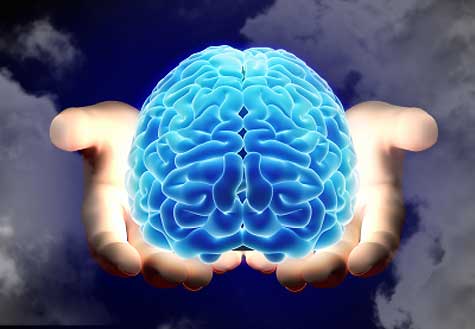News
Infrastructure and Innovation
Automatic Implementation of Secure Silicon (AISS)
Mr. Serge Leef For the past decade, cybersecurity threats have moved from high in the software stack to progressively lower levels of the computational hierarchy, working their way towards the underlying hardware. Despite growing recognition of the issue, there are no common tools, methods, or solutions for chip-level security currently in wide use. This is…
Read more
Bioelectronics for Tissue Regeneration (BETR)
Dr. Paul Sheehan The Bioelectronics for Tissue Regeneration (BETR) program will develop technology aimed at speeding warfighter recovery, and thus resilience, by directly intervening in wound healing. To do this, researchers will build an adaptive system that uses actuators to biochemically or biophysically stimulate tissue, sensors to track the body’s complex response to that stimulation,…
Read more
Biological Control
Dr. Paul Sheehan The Biological Control program seeks to support a wide range of potential Department of Defense (DoD) applications by establishing design and control principles that lead to reliable performance in biological systems. Leveraging technologies developed under this program will enable consistent operation of systems that combat biological threats; speed healing after physical trauma;…
Read more
Artificial Social Intelligence for Successful Teams (ASIST)
Dr. Joshua Elliott Humans intuitively combine pre-existing knowledge with observations and contextual clues to construct rich mental models of the Humans intuitively combine pre-existing knowledge with observations and contextual clues to construct rich mental models of the world around them and use these models to evaluate goals, perform thought experiments, make predictions, and update their…
Read more
Artificial Intelligence Research Associate (AIRA)
Dr. Jiangying Zhou The Artificial Intelligence Research Associate (AIRA) program is part of a broad DARPA initiative to develop and apply “Third Wave” AI technologies that are robust to sparse data and adversarial spoofing, and that incorporate domain-relevant knowledge through generative contextual and explanatory model To facilitate use of AI in the scientific process, AIRA…
Read more
Air Combat Evolution (ACE)
Col. Daniel Javorsek, USAF The ACE program seeks to increase trust in combat autonomy by using human-machine collaborative dogfighting as its challenge problem. This also serves as an entry point into complex human-machine collaboration. ACE will apply existing artificial intelligence technologies to the dogfight problem in experiments of increasing realism. In parallel, ACE will implement…
Read more
Agile Teams (A-Teams)
Dr. John S. Paschkewitz The Agile Teams (A-Teams) program aims to discover, test, and demonstrate generalizable mathematical abstractions for the design of agile human-machine teams and to provide predictive insight into team performance. More
Deep Intermodal Video Analytics (DIVA)
The DIVA program seeks to develop robust automatic activity detection for a multi-camera streaming video environment. Activities will be enriched by person and object detection. DIVA will address activity detection for both forensic applications and for real-time alerting. Read more
Crowdsourcing Evidence, Argumentation, Thinking and Evaluation (CREATE)
The CREATE program seeks to develop, and experimentally test, systems that use crowdsourcing and structured analytic techniques to improve analytic reasoning. These systems will help people better understand the evidence and assumptions that support—or conflict with—conclusions. Secondarily, they will also help users better communicate their reasoning and conclusions. The CREATE program is envisioned as a…
Read more
Creation of Operationally Realistic 3D Environment (CORE3D)
The CORE3D program aims to develop technology that generates, in an automated way, accurate 3D object models with real physical properties, from multiple data sources including commercial satellite panchromatic and multi-spectral imagery for global coverage, and airborne imagery and Geographic Information System (GIS) vector data, where available, for improved resolution and fidelity. Performers (Prime Contractors)…
Read more









